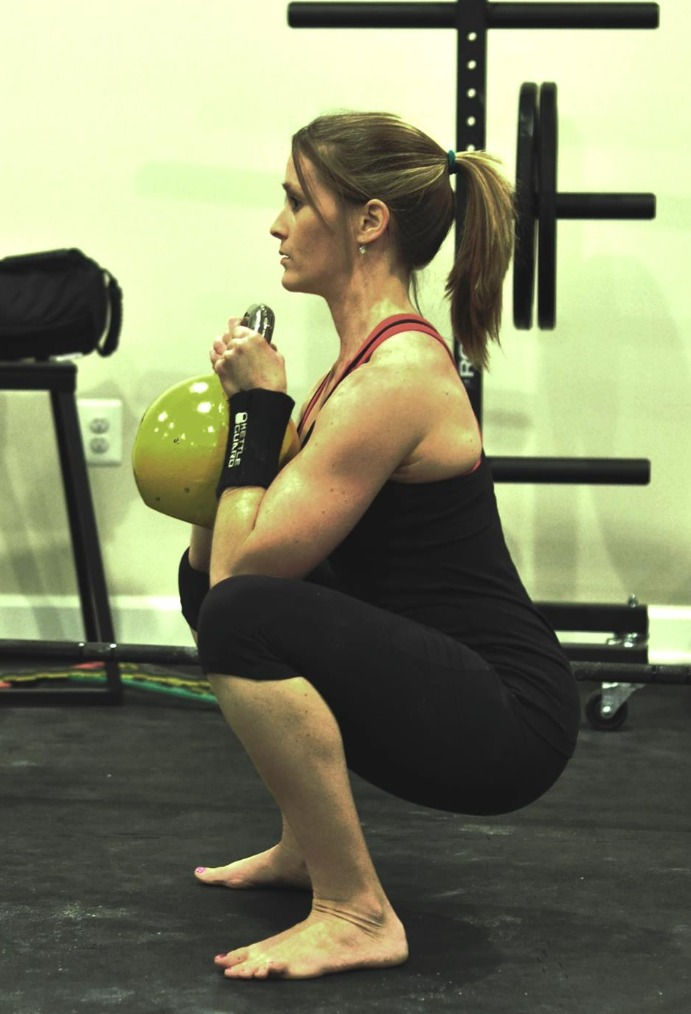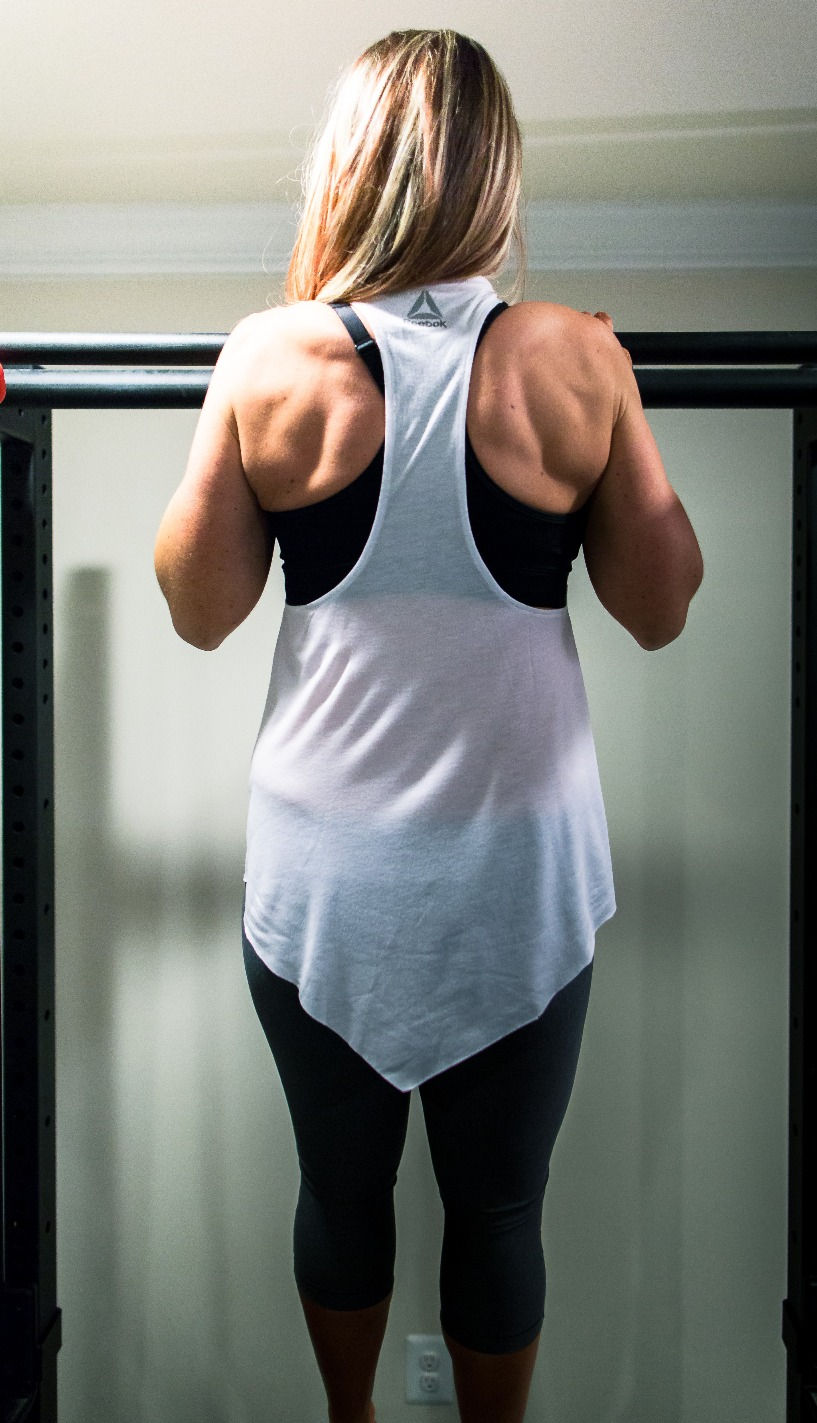MORE TO THE CORE: How to Get It Strong and Defined
- Emily Ledford
- Apr 9, 2018
- 7 min read
Updated: Jan 23, 2020

One of the most common goals I hear among new clients is a desire for a “stronger and tighter core.” As a natural default, they’ll usually place their hand over their abdominal area (where the six pack muscles live) when addressing it's current weakness. These muscles are known as the Rectus Abdominis and its the area they want to focus on targeting.
And while I do understand what they mean, I want them to know:
THE CORE IS SO MUCH MORE.
To work the core fully and get it stronger, you’ll need to understand everything it entails. The core includes all the muscles around the abdomen, trunk and pelvis- yes even your lats and glutes! Quite literally, the core is all the muscles in the torso. So, it’s going to take a whole lot more than a 30-day challenge of sit ups and crunches that you see being shared around the internet to suffice. You won’t get strong, toned or flat abs with that plan and you can't spot reduce the fat away in that area. But instead of talking in a bunch of scientific jargon, I’m here to help you simplify it all.
WHY IT SO IMPORTANT ANYWAY?
The core muscles take on many tasks among which are generating movement, transferring energy and stabilizing the entire body. These muscles also contribute to a healthy spine. They are needed for everyday activities including good posture, running, balancing, lifting, stabilization and maintaining a healthy back. When the core muscles are a weak link, the risk of injury and pain (anywhere in the body) will be higher. Their weakness will also hold you back from reaching a greater level of fitness.
BENEFITS OF A STRONG CORE:
EVERYTHING IS EASIER: Whether you are bending, balancing, running, walking, picking something up, squatting, or carrying, it will be easier on every part of your body if you have core strength and endurance.
INJURY PREVENTION: Less likely to have a fall or injury, low back pain, neck pain, ruptured disks, strains and even incontinence! Posture will improve, therefore reducing the strain on the spine.
TIGHTER ALL OVER: Leaner, stronger and more athletic due to increased muscle mass.
FOCUS ON GETTING STRONG ALL OVER.
I know you want to feel the fire in those abs, so that you have confidence you’re working them thoroughly. But don’t let that be your only assurance that you're doing enough. The stronger you get the rest of the body, the stronger you can get your core. And vice versa. If we limit our core work to focus only on the desired six pack muscles (instead of everything else it involves), we are missing out… and not just in fitness, but in quality of life.
Muscle imbalances can create problems and pains of their own and you’ll be doing yourself a disservice if you are trying to get strong and defined abs from only direct work like crunches and sit ups. There are literally hundreds of exercises more effective than those. But first and foremost, you especially need to get strong in the main compound lifts.
I've put together a few examples of compound lifts:
UPPER BODY PULL: (horizontal and vertical) suspended row and pull up variations
HINGE: glute bridges, conventional and sumo deadlifts, pull thru, hip thrust, Romanian deadlift
SQUAT: front, goblet, back, sumo, offset
UPPER BODY PUSH: (horizontal and vertical) push up and overhead press
LUNGE AND OTHER SINGLE LEG STANCE EXERCISES: reverse lunge, rear leg elevated squat, single leg Romanian deadlift, Step Up
A solid program implementing these movements 2-4 times a week (while being mindful of continually progressing when needed) will yield more balanced full body strength and endurance. And make no mistake: with ANY of the movements listed above, you ARE activating and working your core muscles. No one ever did a push up or overhead press, squat or deadlift without getting their core involved. We want it not only involved, but we want it sturdy enough to withstand the workload surrounding it. Otherwise, you risk injury. So, let’s aim to make ourselves more bulletproof. Or at least more injury proof. I can only guarantee so much!
DIRECT AB/CORE WORK? AB--SOLUTELY.
One word of caution here: If you are pregnant, newly postpartum or have developed diastasis recti, there will be other options that you may need to begin with to safely manage intra abdominal pressure while healing and managing pelvic floor dysfunction or pelvic organ prolapse. Say what?! Yes, if you are dealing with any suspected issues here, make sure your trainer is aware and KNOWS HOW to help you train the core and body safely and effectively during this time. More importantly, find a pelvic health physiotherapist to determine what is right for you at the time being and what you should avoid. You don’t want to worsen symptoms. The good news is that your training can include more over time! Just don’t rush it!
FIRST THINGS FIRST: In the beginning, a plank and side plank are perfect for most people to develop stability, endurance and strength in the core muscles. And to get the most out of these, you DON’T NEED to hold them in a plank competition for 30 minutes. YOU NEED TO MOVE ON to something more challenging after you are holding them for 60 seconds. Or your progress will stall. Below are a few examples of four foundational movements that your training should include.
ESSENTIAL FOUNDATIONS OF CORE TRAINING
1. ANTI-EXTENSION –Again, plank is a great beginning, revisit it sometimes, but don’t stay there. In anti-extension work, you will be trying to stabilize a position without arching your back.
Example: plank, plank w/ reduced base of support, ball roll out
2. ANTI-ROTATION – This is where you will resist rotation. You’ll feel like you could rotate by the way you are being pulled-BUT resist!
Example: Static Cable Hold and Pallof Press
3. ANTI-LATERAL FLEXION- You are resisting bending sideways.
Example: Carries with one OR two arms and side plank variations
4. HIP FLEXION- Movement around your core while maintaining control and using your abs.
Example: mountain climber and hanging leg raise
Add in direct core work from these categories 2-3 times a week. One or two movements per session will be adequate. Work in the range of 8-12 reps for 2-3 sets for most core exercises. If it’s a static hold (no movement involved), working up to 60 seconds will be plenty. You don’t need copious amounts of ab work or crazy 30-minute ab workouts everyday. Remember: these muscles will need the right amount of work AND rest to gain strength and grow outside of the gym, just like any other muscle in your body. Don't forget: with those main compound lifts, you ARE working your core too. Keep quality over quantity, always.
FULL BODY WORKOUT TEMPLATE
Below is a basic template of how to get the entire body strong with just the right amount of direct core training.
Perform A and B Training Days below, alternating between the A and B sessions on different days. Perform a total of 2 -3 sessions per week, with a least one day of rest between the sessions.
Example: Mon: "A" /Wed: "B" /Fri: "A"
Keep track of progress in either reps, variations, ranges of motion, load, etc for 4-6 weeks.
How to read: 1a and 1b OR 2a and 2b are considered a “superset”. Alternate the exercises containing the same numbers first for the number of sets given before moving on to another number set. This is an efficient way of using time in the gym, working one part of the body while another is resting.
"A" Training Day
1a) SQUAT: Goblet Squat 3 x 8-10

1b) VERTICAL PULL: Pull Up 3 x 6-8

2a) ANTI-EXTENSION (direct abs/core): Stability Ball Roll Out 2-3 x 8-10

2b) LUNGE: Reverse Lunge 3 x 8-10/side

3a) HORIZONTAL PUSH: Push Up 3 x 8-10

3b) HIP FLEXION (direct abs/core): Hanging Leg Raise 2-3 x 8-10

"B" TRAINING DAY
1a) HINGE: Deadlift 3 x 5-7


1b) VERTICAL PUSH: Overhead Press 3 x 10-12

2a) HORIZONTAL PULL: Suspended Row 3 x 10-12

2b) HINGE: Hip Thrust 3 x 10-15

3a) ANTI-ROTATION (direct abs/core): Pallof Press 2-3 x 8-10/side
3b) ANTI-LATERAL FLEXION (direct abs/core): Double or Single Arm Carries 2-3 sets of 30-45 seconds each side

The template above is simply a means of showing you what a training period might look like to cover the basics. One may need a regression or progression to each exercise. It’s the reason when I train my own clients in person, no one exercise fits all. There’s literally hundreds of exercises within each basic movement that can be chosen. It’s about fitting the exercise to the person, not the person to the exercise.
SO, WHERE MY ABS AT?
You’ll get strong a stronger core (yes, including that six pack) if you do these exercises consistently with progression in mind. But don’t think that you have a guaranteed pass to SEE that six pack. Seeing your abs STILL boils down to nutrition. If you take in more calories than you need on a regular basis, you’ll likely have fat covering them. No other way around it. On the other hand, don’t eat like a baby bird and expect to build a ton of muscle. Though abs may mostly be made in the kitchen, if you don’t have the muscle, then you won’t be able to see it either. It’s quite a bit fine tuning of the diet. But you won’t starve your way to abs.
No matter where you are trying to add muscle and strength it takes TIME. As in, this is a lifetime thing. So is your diet. You can’t workout and eat healthy for a month and expect to have a washboard gleaming through. You CAN make improvement week to week in reps, variations, added load to exercises and in nutrition! If you are tracking progress, you are well on your way to a stronger and more defined core!
I’ll repeat one of the biggest take homes I’d like you to get from this article: The stronger you get the rest of the body, the stronger you can get your core, (including the abs of course) AND the stronger you get your core, the stronger you can get the rest of your body. It’s a win-win, really! It’s imperative that the body is working together in unison.
And my dear bro and sis, it’s also OK to NOT see your abs. Having abs that poke though doesn’t guarantee they are strong. By now you should also realize that strong is going to take some serious effort! Having abs that peak through is optional, but strength is not!




Comments